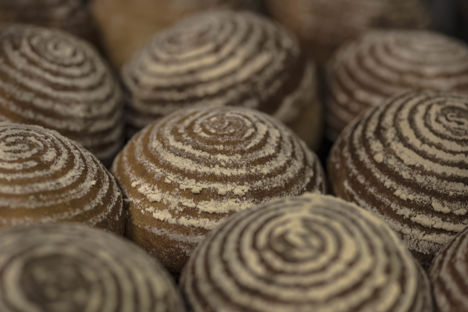
Great British Bake Off: inspiration and tips for Bread Week
Bread Week can make or break a Great British Bake Off contestant. We have all the inspiration and advice you need for bringing your own loaves up to scratch.
Great British Bake Off: inspiration and tips for Bread Week
Bread Week can make or break a Great British Bake Off contestant. We have all the inspiration and advice you need for bringing your own loaves up to scratch.
Bread Week in the Great British Bake Off tent can break many a strong contestant, especially those who are more comfortable cooking cakes and puddings. Suddenly the playing field changes and accuracy, knowledge and experience are more important than ever. They say you can judge a restaurant by the quality of their bread and the same is true of a baker. This is baking at its most scientific and there’s no buttercream icing to hide behind.
Having said this, making bread at home isn’t as complicated or as labour intensive as many people think – much of the important work is done in the proving process when you don’t have to do anything but watch the dough rise. Like all baking, there are rules to follow but with a good recipe and a little practice, perfect bread is within your reach.
Leavened breads (those that rely on yeast for their rise) are time-consuming due to the importance of proving but the satisfaction of producing your own bread makes up for the slow process. Start with a simple loaf like Dominic Chapman’s White bread or Kevin Mangeolles’ Rye bread; then, when you have mastered the basics, experiment with flavours and textures. Add herbs, garlic, malt, spices, saffron and cheese to give extra pep to plain loaves or incorporate chunkier ingredients such as onions, beetroot, olives, cranberries and nuts for an extra dimension. Pete Biggs’s Bacon, onion and cheddar flatbread is a great way to start a meal, as is Ollie Moore’s aromatic Allotment bread which is scented with lavender, rosemary, borage flowers, curry leaves and curry plant pollen. Adding root vegetables such as parsnip or potato to the dough adds extra moisture to the crumb and using different flours like rye, spelt, oat, wholemeal or granary all produce yet more interesting results.
This year, the bakers will kick off with the signature challenge of creating a sweet dough with a twist. Sweet breads are often associated with Easter – just look at Elly McCausland’s Easter sweet spiced fruit bread or Karen Burns-Booth’s Kulich. Christmas is another time of year when dough is enriched with sugar and spice; Povitica is a traditional festive eastern European bread. Izy Hozzack’s Cranberry and walnut challah bread makes for an incredible breakfast loaf, too, so the Bake Off contestants have plenty to work with.
The technical challenge puts the baker’s most precious appliance – the oven – off limits, challenging those in the tent to make bread without one. Flatbreads of all kinds (such as Maneesh, Naan bread, Spelt and rye) are cooked on the hob, although Paul might have something a little more tricky up his sleeve.
To bring the episode to a close, the showstoppers need to be made with three flours, offering different textures, flavours and colours to the finished piece. If you’re eagerly pre-heating your oven in a bid to bake along with the show, keep the following tips in mind.
Tips for great bread
Invest in a good set of digital scales – accurate measurements really make a difference in bread making.
Knead the bread thoroughly to allow the gluten to develop – well-developed gluten gives a better bread.
Be patient – don’t rush the proving process because this is when the magic happens.
Add some water to a roasting tray and place it on the bottom of the oven to create steam while the bread is cooking – moisture helps a good crust develop.
Bake bread at a high temperature for a crunchy crust.
The best way to test whether bread is done is to tap it on the bottom – if it sounds hollow when you knock it, it is ready to take out of the oven.


